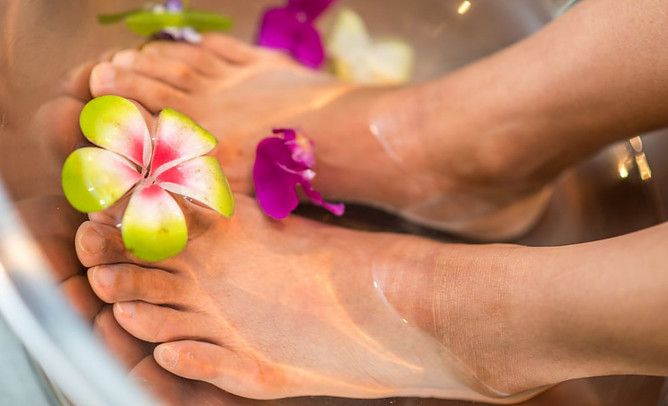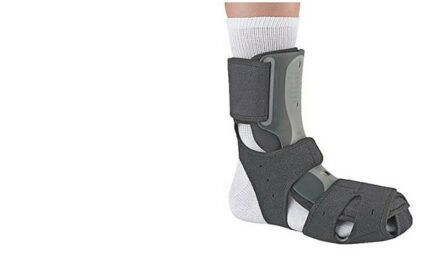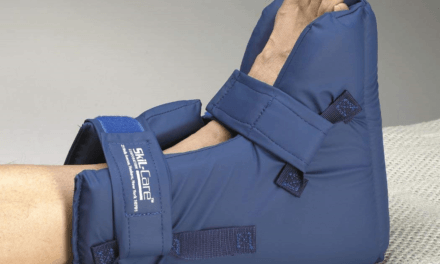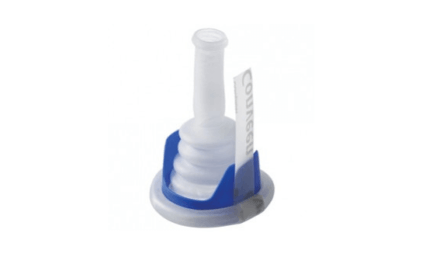You may likely schedule an appointment with a foot massage therapist to relieve tight muscles, injury or pain, and just relax. But along the journey through the healing process, you may likely experience some degree of pain and soreness. You might wonder what these pains mean or why it hurts so much. Most importantly, you would ask, ‘why foot massages hurt so much sometimes…’
Read on to find out the reasons why foot massages sometimes hurt, the various types of massage available, how to distinguish a good massage therapist from a bad one, and when to receive a foot massage for the best outcome and much more.
Let’s start rolling by defining what we really mean by a foot massage.
What is a Foot Massage?
I am sure you can easily guess what a foot massage is – simply a type of massage therapy focused on the manipulation of feet tissues. It relieves tension, relaxes the muscles and improves circulation and the general well-being of a person.
Foot massage treatment has its origins from China, and has since been used by the Chinese to traditionally identify and cure every illness.
What is Reflexology?
Reflexology is based on a theory that certain parts of the body – the hands, feet and ears, are connected to certain body systems and organs. Varying amounts of pressure is applied to vital reflex points in these parts of the body by Reflexologists, which is believed to have healing effects.
There are a few different theories about reflexology and how it works.
Let’s explore them now…
How Does Reflexology Work?
According to Traditional Chinese Medicine
Reflexology is founded on the ancient Chinese belief that Qi (or “vital energy”) flows through every individual. Based on Chinese Medicine, the body blocks the flow of Qi when a person feels anxious or stressed, this causes an imbalance in the body and can lead to illness.
The purpose of reflexology is to keep the Qi in the body flowing and balanced, thereby making it disease-free.
Reflexologists determine where to apply pressure using maps of pressure points in the hands, feet, and ears. In Chinese medicine, it is believed that different body parts are related to different pressure points on the body. And as such, a reflexologist’s touch is believed to send Qi (energy) flowing through an individual’s body until the area in need of healing is reached.
According to Western theories and Others
British scientists in the 1980s found that nerves connect the internal organs and skin. They also discovered that the whole nervous system seems to adjust to factors outside the body, including touch and sensation.
It is then safe to say that the touch of a Reflexologist may promote relaxation, calm the central nervous system as well as promote other benefits associated with massage.
Other Theories for Reflexology
Many at times, our brains reacts to physical pain. While some other times, it creates pain in response to mental or emotional distress. There are others apart from the West, who believe the brain creates pain as a response to subjective experience.
There are also others who believe that reflexologists can reduce pain with a calm touch, which may consequently reduce stress and improve a person’s mood.
Others who believe in Zone theory, use it to explain how reflexology works. This theory says that there are 10 vertical zones which the body contains. Each one of these zones contain different parts of the body, and corresponds to specific toes and fingers.
Zone theory practitioners believe that touching these toes and fingers grants them access to everybody part within a zone.
Tip: Osito Foot Massager is one of those popular among our community.
Benefits of Reflexology and a Good Massage
There are tons of benefits associated with massage and reflexology, but many are yet to be evaluated in scientific studies and thus anecdotal.
Reflexology and massage may help you with the below.
- Reduce pain
- Reduce anxiety and stress
- Improve overall well-being
- Improve mood
- Fight cancer
- Boost the immune system
- Relieve from bacterial infections and cold
- Improve digestion
- Relieve arthritis pain
- Recover from back pain and issues
- Boost fertility
- Relieve sinus problems
- Correct hormonal imbalances
- Treat nerve issues and peripheral neuropathy (numbness from cancer drugs).
Types of Foot Massage
There are various types of massage, those for specific diseases and conditions, and or those that are for comfort. Some of them are listed below:
- Foot Reflexology
Similar to acupressure, this technique involves applying varying pressure to specific points on the feet. Reflexology practitioners believe the technique stimulates the flow of energy and help relieve pain, promote relaxation and ease stress.
- Swedish Massage
This is the most common type of massage, involving the use of five basic strokes. It is focused on the connective tissues and muscles for better circulation, pain relief, relaxation and general well-being.
- Shiatsu massage
Very similar to reflexology, Shiatsu
utilizes pressure points to improve other parts of the body. It not only presses the foot and toes, but rotates, swivels and pulls them in different directions.
- Thai massage
Thai massage practitioners use knuckles, thumbs, fingers and a wooden stick to apply pressure to targeted specific pressure points. These pressure points align with the 10 major energy lines running throughout the body.
- Deep-Tissue Massage
Practitioners of deep-tissue massage have an adept understanding of human anatomy. It is mostly used to treat chronic pain, injury and inflammation.
Deep-tissue massage involves the application of slow strokes, friction or direct pressure across grains of muscle using the thumbs, fingers, or elbows. It works deeply into the connective tissues and muscles, one wrong turn could inflict an injury.
Tip: Here are the Best Sharper Image Massagers.
Other Types of Massage
- Lymph Drainage Therapy (LDT)
This technique uses light rhythmic strokes to improve different conditions (such as neuropathies, edemas and inflammation) related to the lymph system in the body.
By using a “mapping” system, therapists can reach congested areas in the body, apply gentle pressure and restore proper lymph flow.
- Medical Massage
The medical massage therapists have a strong background in disease, pathology, injury and illness, and contraindications of certain massage techniques related to some medical conditions.
- Neuromuscular Therapy (NMT)
NMT also is known as trigger-point therapy, involves the application of concentrated finger pressure to “trigger points” to relieve muscular pain and nerve pain/pressure.
- Connective Tissue Massage
Connective tissue massage practitioners work with the body’s soft tissue to relieve tension, pain, stress and improve mobility. They “hook” their fingers into the body’s connective tissue and apply pulling strokes to stretch the area.
- Massotherapy
These techniques are primarily for muscles and helps to alleviate pain, improve blood flow and circulation.
Tip: Have you heard about AccuRelief Ultimate Foot Circulator?
- Geriatric Massage
This type of massage is specifically for the elderly, tailored to address their aged needs, illness and depression.
The geriatric massage usually has short sessions involving the use of gentle techniques to improve relaxation, pain relief, and general wellness.
- Aromatherapy
There are many essential oils with beneficial therapeutic values. Many of which are derived from herbs, plants, roots and flowers. This technique involves “burning” essential oils to achieve the desired effect.
Sometimes, the essential oils could be added to the massage oil or cream and then applied to the skin. And other times, experienced professional aromatherapists could also blend oils to treat particular conditions.
- Sports Massage
As the name says, it is a massage therapy for athletes during their training, warm-ups and competitions. It is both therapeutic and preventative, for improving circulation, flexibility, performance, range of motion, mental clarity and preventing injuries.
Signs of a Good Massage Therapist
A good massage therapist should possess qualities such as:
- Good communication skills
Good massage therapists listen to their client’s requests, pay attention to their medical conditions (if any), and any other needs and goals the client may have.
- Empathy
Massage therapists are required to build trust between them and their clients in order to deliver a positive experience.
- Decision-making skills
Massage therapists have to be able to efficiently evaluate a client’s needs and recommend which treatment plan would suit the client best, according to their needs.
- Physical strength and dexterity
They have to be strong enough to apply pressure through different hand and arm movements when manipulating a patient’s muscles.
- Physical stamina
Massage therapists may treat several clients a day and will have to stay on their feet throughout the sessions.
Look out for professional massage therapists with certifications from the American Physical Therapy Association, or the Associated Bodywork and Massage Professionals.
Some of the common certifications or licenses include:
- LMP (Licensed Massage Practitioner)
- LMT (Licensed Massage Therapist)
- NCTM (National Certification Board for Therapeutic Massage and Bodywork, for practicing therapeutic massage)
- NCTMB (National Certification Board for Therapeutic Massage and Bodywork, for practicing therapeutic massage and bodywork)
Signs of a Bad Massage Therapist
Now that you know the qualities of a good massage therapist, how about a “bad” massage therapist. You can tell a lousy massage therapist from a good one when:
- You’re no longer in control.
You should always be able to speak up about when things get uncomfortable, and you want some adjustments made. A therapist who doesn’t want you to talk during a session, is a red flag!
- They show no care in what they do, without paying attention to the client’s needs, they may go ahead and do their own thing even if it’s ineffective or aggressive.
- The working space is unclean.
An unclean massage therapist in an unclean working space doesn’t give good vibes. Neither is a talkative one, especially when it’s off-topic.
- They aren’t licensed.
You can also try to do a quick search online to verify if your therapist is truly licensed, apart from the physical license they have to show.
Is Foot Massages Supposed To Hurt?
Foot massage is supposed to be soothing and relaxing. But honestly, yes there are times when it hurts. In the same way, you feel sore after a good workout, massage can stimulate target areas of the body you may have ignored.
A massage can highlight hidden tensed areas in your body and make you feel “post-massage soreness and malaise” (PMSM) – a common side effect. If you’re highly sensitive, have a lot of tension or pain, or just want to simply avoid feeling sore after a massage, you should opt for a gentle pressure, light massage.
Deep-tissue massage sessions will most likely result in after-massage soreness.
But how can you tell when it is a good pain or bad pain?
Let’s see how.
Good Pain and Bad Pain During a Massage
Just like you ache and feel sore after a good workout, it is normal to feel sore during/after a feet massage session, even more so if it is your first time. The technique improves circulation, carrying nutrients and blood to your muscles, eliminating toxins along the way.
If your muscles aren’t used to massages or perhaps you have lactic acidosis (lactic acid build-up in the body), you might experience muscle soreness setting in afterwards. It is purely your body’s physical response to the inflammation as it heals.
Pain experienced during a massage (deep-tissue massage or Thai massage, say), shouldn’t be a little more than uncomfortable. Bruising is something that should never occur during a massage, but it sometimes happens when the therapist becomes aggressive and applies too much pressure. However, if you feel uncomfortable during a massage or it starts to get painful, there is nothing wrong with speaking up about it.
It is important to communicate your concerns to your therapist when the massage starts to get painful.
Why Do My Feet Hurt After a Massage? The Reasons
Foot massage, unlike regular massage is something you begin to enjoy with time. For a beginner rookie, it might start off as being really uncomfortable, but eases and gets better over time (supposedly).
Why does a foot massage hurt so much, and what do this discomfort and pain mean?
Let’s delve into the details below.
Various reasons could contribute to why you experience pain/discomfort during a foot massage. Some of which have been listed below.
- Because those precious feet have never received a massage before
Like most people, you may have never had the opportunity to pamper your feet. Even though the feet are an underrated part of the body, it still deserves attention and TLC.
For a first-timer who’s never had a foot massage, stimulating the nerve endings and muscles could result in weird sensations of all sorts. Unfortunately, that includes pain and discomfort. But eventually, after 5-10 sessions the tension in your feet muscles slowly eases away, it gets better and better and more enjoyable.
- Because too much pressure is applied by your massage therapist
There are tons of highly skilled and incredibly excellent therapists out there, with adept knowledge of massage and what it’s all about. Sadly, there are just as many worse and poorly trained therapists in the market.
Massage doesn’t have to hurt to prove its effectiveness, contrary to the mindset/philosophy of some people. This does not necessarily apply to deep tissue sessions. A good therapist should be able to observe and gauge the level of pressure required according to a patient’s need, and deliver accordingly.
- Because there might be an underlying health issue
During a foot reflexology session, various parts of the body can get stimulated directly from pressure points in the foot. When you experience pain during a foot reflexology session, it is best to consult with your doctor for proper diagnosis. But for informational purposes, experiencing an isolated pain during reflexology could mean that there is a problem with that particular part of the body.
What Does It Mean When a Pressure Point Hurts?
Pressure point and Trigger point massage are basically the same things.
Trigger point means the pain is triggered by trauma or inflammation in another area of the body. For example, severe pain in the shoulder could mean a trigger point in the back is inflamed. Pressure point massage is all about applying pressure to the right points in the body to aid in the healing process.
A pressure point massage locates the “trigger-point-based” pain and applies appropriate pressure to ease the tension and facilitate healing. During a pressure point massage session, you may experience pain or spasms when the therapist applies pressure to the specific trigger points.
Without over stimulating the trigger point, qualified therapists are trained to apply just enough pressure. This technique addresses the root of the pain and creates a lasting and effective healing outcome.
When Should You Receive a Foot Massage?
Most people who wish to show their feet some TLC simply go for a massage session. But massage has tons of health benefits, and works great for people with health issues relating to nerve damage or poor circulation, such as diabetes.
People with conditions like fibromyalgia, arthritis and chronic pain also benefit from moderate pressure massage therapy. Pregnant women can also benefit from a foot massage, but it shouldn’t be done without a doctor’s approval.
A foot massage can reduce edemas (foot swelling) in pregnant women, diabetics, and individual with kidney or heart problems. A 2004 study in South Korea conducted by doctors, showed that triglyceride and systolic blood pressure levels were significantly reduced in test subjects who received reflexology.
Tip: Here are the best foot massagers for people with diabetes.
When Should You Not Receive a Foot Massage?
Beginner rookies at foot massage with any health issues, should discuss those issues with their doctor first. Then with their therapist ahead of time to ensure those medical issues are put into consideration.
Even though foot massage and reflexology is typically a safe and healing practice, it is important to be aware of times when it is not a good choice.
- Blood clotting issues, Severe Osteoporosis, Deep vein thrombosis, Cancer
Because foot massage and reflexology improves circulation, it is most likely to cause a clot to move towards the brain or heart.
Cancer patients can consult with their oncologist first, as massaging over a tumor is a bad idea.
- Foot injuries, bleeding disorder, or recent surgeries
If you have active gout, osteoarthritis, open wounds, unhealed wounds, burns or fractures in the foot, you should avoid foot reflexology.
The Therapists generally stay away from open wounds, or wear gloves and try to avoid compromised areas if really have to do it.
- Pregnancy
Having a foot massage or reflexology session during pregnancy is a bit tricky, but safe as long as specific areas that might stimulate uterine contractions are avoided.
In the case where a pregnant woman develops a blood clot, a foot massage should be avoided. If you also have reddened, warmer, or swollen spot on your lower legs, do not get a massage, and see your physician immediately.
- You might also need to consider that performing reflexology on children and babies might not come with full benefits, because they seldom have the patience for a whole session.
Can a Bad Massage Cause Nerve Damage?
Massage therapy is mostly safe, but nothing is perfect. Things can sometimes go wrong, most especially with a deep-tissue massage. It is very rare to experience serious injuries during massage therapy, but there have been such cases.
And yes, you can get a nerve injury from a massage, when the therapist pushes firmly enough in the wrong place. And this can happen even with a professionally skilled massage therapist (although very rarely). The resulting damage is usually minor but may result in days, if not weeks of intense discomfort for the client.
If you’re a person with neuropathy issues, depending on the level of nerve damage, you may not be able to perceive pressure. Your massage should be one of a moderate pressure, even though you may feel the need to ask your therapist to “go deeper” because you can’t really feel it. That may do more harm than good.
In that case, LDT (Lymph Drainage therapy), Foot Reflexology and light Swedish massage are good options to explore.
Conclusion
Foot massage is something to be enjoyed, and it comes with health benefits too. In trying to find what suits you best, you can explore different angles and degree of pressure while massaging your feet’s pressure points. It definitely feels good!
Our feet go through so much, and takes quite a beating by the end of the day. A deep massage might be just what you need to get rid of every other pain and aches.
Finally, diabetics need to check in with their doctor as a precaution. Remember, diabetic neuropathy could sometimes become worse when pressure is applied.














